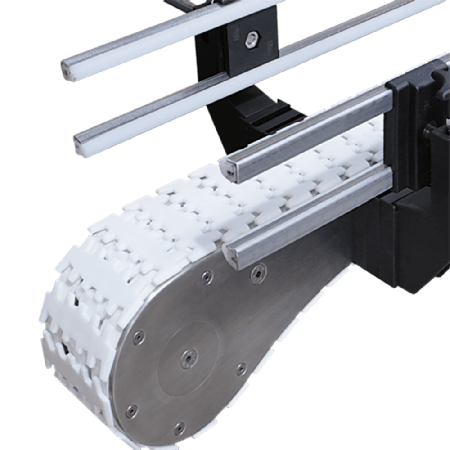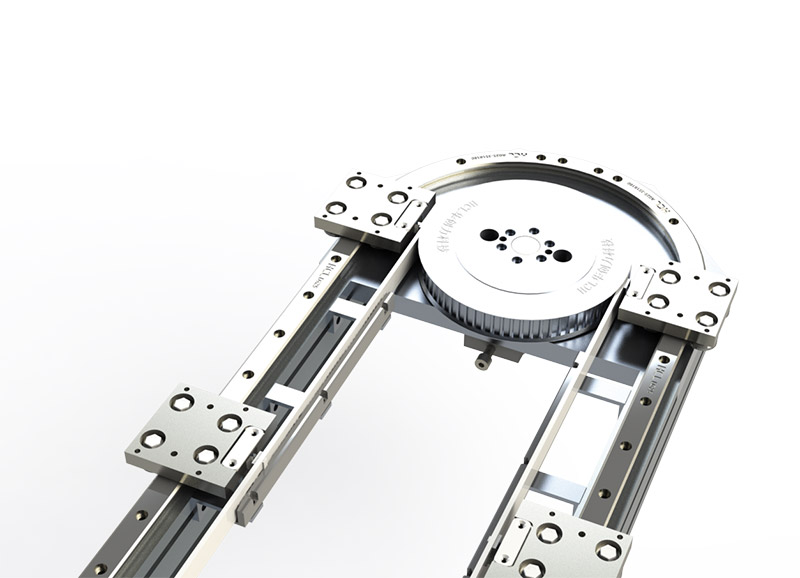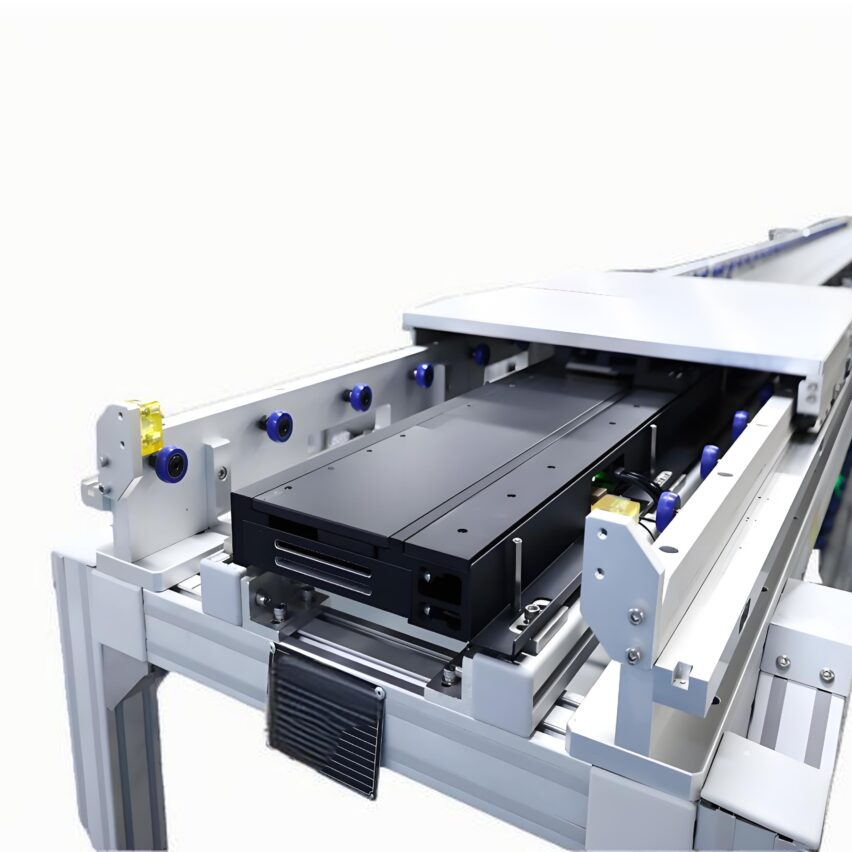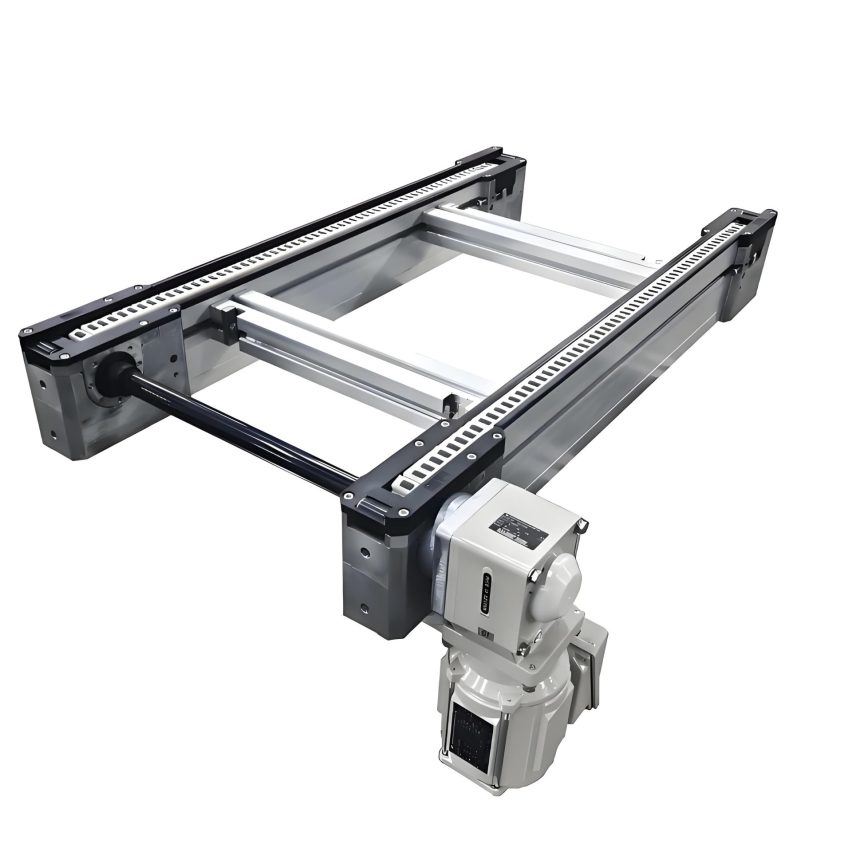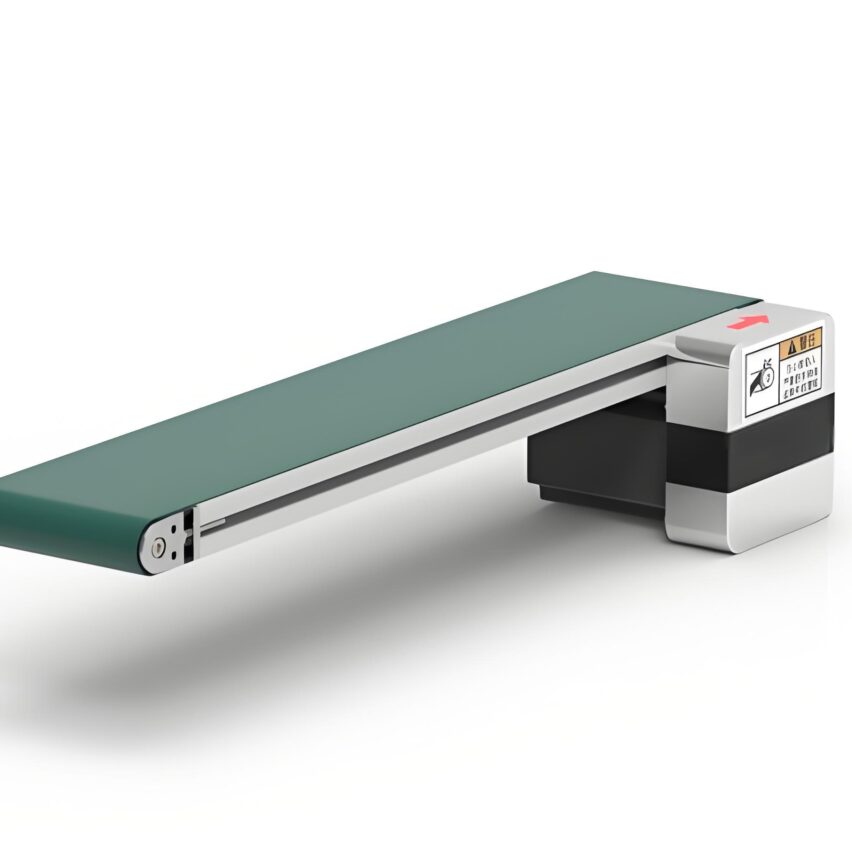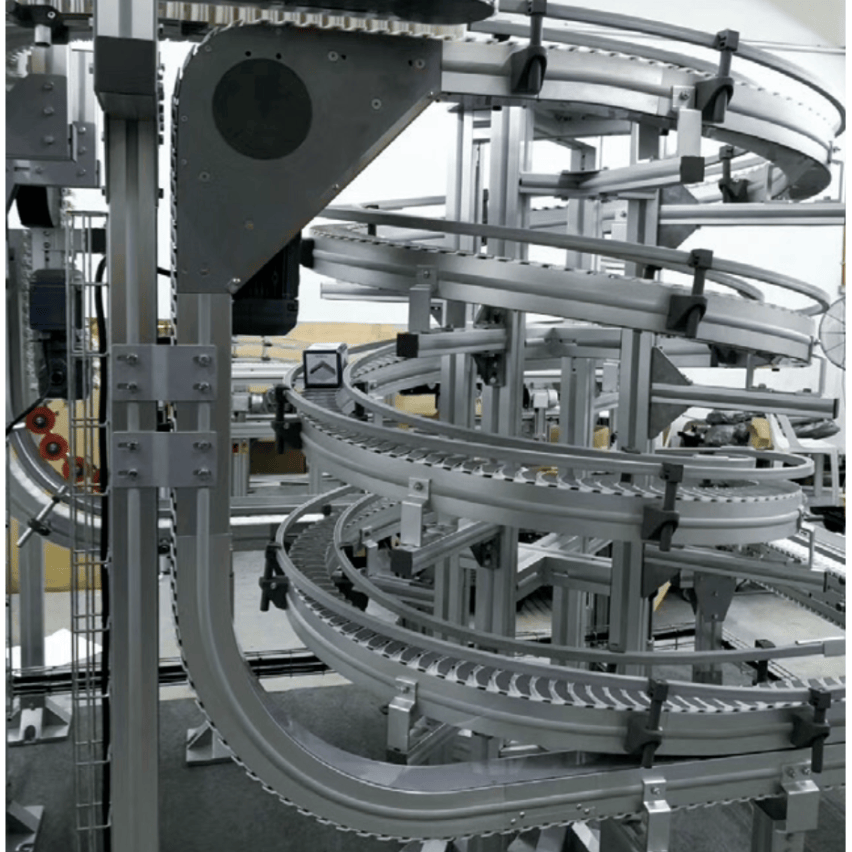Structural innovations in intermediate drive systems
The intermediate drive multiplier chain reverses the traditional end-drive design paradigm by incorporating thePower source embedded in the middle of the conveyor line, forming a multi-point distributed power architecture. Its core consists of three parts:
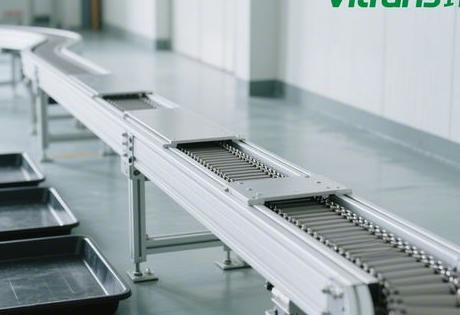
- Modular drive units: One 0.75kW servo motor every 3-5 metres, connected to the drive shaft by a universal coupling.
- Double-sided meshing sprocket setSpecially designed double gear sprocket occludes both inner and outer links, increasing transmission efficiency to 95%.
- Intelligent Synchronised Controller: CAN bus real-time coordination of multi-motor phase difference<0.1°
personal experience: When inspecting an automotive welding line, it was found that the traditional end drive vibrated up to ±2mm on the 120m line body, while theIntermediate drive systemsCompression of the amplitude to ±0.3 mm by means of power dispersion - this confirms the principle of mechanical dynamics that "dispersing the power source = suppression of wave conduction".
Engineering Advantages and Performance Breakthroughs
Triple evolution of the intermediate drive multiplier chain compared to conventional end drives:
#####Revolutionary optimisation of energy consumption
| parameters | End drive | Intermediate drive | Enhancement |
|---|---|---|---|
| Total motor power | 11kW | 7.5kW | Descending 32% |
| Start-stop energy consumption | 18kWh/day | 6.2kWh/day | Drop 65% |
| peak current | 210A | 95A | Descending 55% |
| Source of data: Shenzhen Chengming Measurement Report (2025) |
#####Breakthrough in Silent Performance
- Impact noise of chain links reduced from 85dB(A) to 68dB(A), meeting office environment standards
- Flexible Engagement Technology: Polyurethane damping layer to absorb sprocket engagement impacts
- Worker hearing damage complaints zeroed out after application at a medical device factory
#####Maintenance Cost Reconfiguration
- Modular changeover time for drive units ≤ 15 minutes (4 hours downtime for conventional structures)
- A single point of failure only affects the local 3-metre section, and the line as a whole can maintain 80% capacity.
- A power plant in Wuhan reduces annual maintenance costs by 37%
In-depth adaptation of industry application scenarios
Intermediate drive technology has spawned proprietary solutions in different industries:
High-precision Automotive Welding Scene
- 50 m white body line body configuration 8 sets of drive units
- Laser weld positioning accuracy ±0.15mm (conventional ±0.5mm)
- A new energy vehicle company raised the beat to 90 seconds per unit
Hygienic food packaging applications
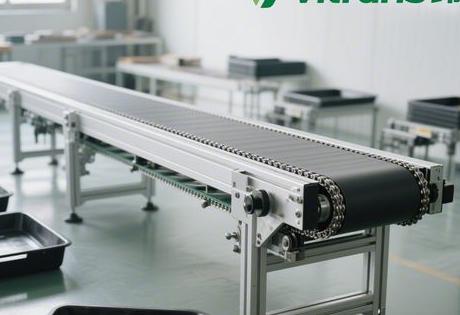
- 304 stainless steel drive unit IP69K protection
- Grease-free self-lubricating bearing technology
- The total number of bacterial colonies in a frozen food factory in Shanghai fell by 98%
3C Electronic Microvibration Exclusion Zone
- Nanoscale anti-static coating (surface resistance 10⁶Ω)
- Magnetic Levitation Assisted Drive Suppresses Low Frequency Vibration
- Shenzhen mobile phone screen factory yield improved to 99.92%
Key points for technology implementation
Successful deployment of an intermediate drive system requires three core elements to be captured:
topological optimisation law
- Drive spacing = 0.2 x total length of wire body + 3 m (empirical formula)
- Heavily loaded sections (>200kg/m) need to be increased to 2-3 metre spacing
- Bevel gear orthogonal drive for curved sections
Control Synchronisation Strategy
plaintextmake a copy ofMain controller (PLC) → CAN bus command → Distributed drive unit │ ├→ Real-time speed compensation (PID closed loop) └→ Torque equalisation algorithmSynchronisation architecture based on Siemens S7-1500
Fail-safe design
- Mechanical hard limit + fibre optic sensing double overload protection
- Mutual backup power supply for neighbouring drive units (switching time <100ms)
- Digital twin previews 16 chain-breaking scenarios
Future Technology Evolution Path
The intermediate drive multiplier chain is undergoing a triple intelligent metamorphosis:
Material Genetic Breakthroughs
- Graphene reinforced nylon gears (wear rate down 70%)
- Liquid metal self-repairing bearings (laboratory stage in 2026)
Energy self-consistency system
- Vibration energy recovery by piezoelectric ceramics (conversion 18%)
- Drive shaft integrated micro wind turbine
Escalation of self-determination
- LLM-based fault prediction system (99.3% accuracy)
- Blockchain records full lifecycle data for drive units
Ask Yourself: Engineering Practice Focus
Q1: Why do intermediate drives reduce vibration?
Principle of waveguide suppression::
- Dynamic dispersion reduces the stress wave length by up to 1/4
- Active energy cancellation by vibration phase differences of neighbouring drive units
- Measured Vibration Spectrum Energy Attenuation in an Aerospace Plant 90%
Q2: Which scenarios should be prioritised?
Four types of prime scenarios::
- Ultra-long line bodies (>80 metres)
- Clean room environment (ISO Class 5 and above)
- High precision assembly (tolerance <0.1mm)
- 24-hour continuous production
Q3: How to assess the cost-effectiveness of retrofitting?
Full-cycle economic modelling::
ROI(months)=[ΔEsav+ΔMsav+ΔQvalue]/Initialcost
Among them:
- ΔE_sav: Energy Savings (Measured $120,000-180,000/year)
- ΔM_sav: Maintenance cost savings
- ΔQ_value: yield improvement premium
Q4: Biggest technical bottleneck in the future?
Multi-physical field coupling challenges::
- Electromagnetic field interference (>10 groups of motors in concert)
- Accumulation of thermal deformation (accuracy drift for temperature difference >15°C)
- Nonlinear vibration superposition
When a Changchun rail vehicle factory deploys 32 sets of intermediate drive units on a 216-metre car body production line, it generates 23 terabytes of operational data per metre of conveyor line per day. These industrial concertos, co-written by the bite of steel and the vibration of electricity, are redefining the law of balance between scale and precision.




